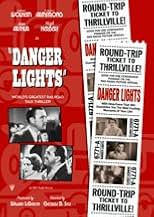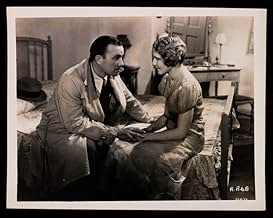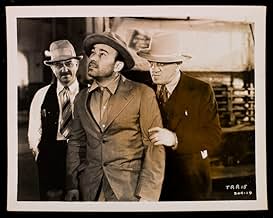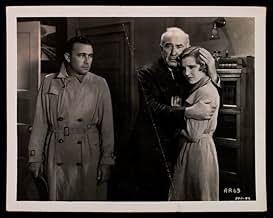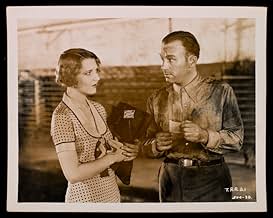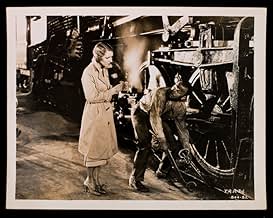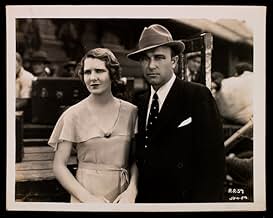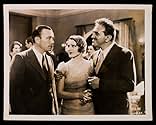Füge eine Handlung in deiner Sprache hinzuThe tough boss of a railroad yard befriends a young hobo, and unwittingly places in jeopardy his relationship with the woman he loves.The tough boss of a railroad yard befriends a young hobo, and unwittingly places in jeopardy his relationship with the woman he loves.The tough boss of a railroad yard befriends a young hobo, and unwittingly places in jeopardy his relationship with the woman he loves.
- Regie
- Drehbuch
- Hauptbesetzung
Jim Farley
- Joe Geraghty
- (as James Farley)
James Donlan
- Picnic Barker
- (Nicht genannt)
Frank Mills
- Hobo
- (Nicht genannt)
Lee Phelps
- Railroad Worker
- (Nicht genannt)
Empfohlene Bewertungen
This film is billed as a love story (typical love triangle), but the human-to-human love story is left in the dust because the human-to-train love story is much more passionate. I won't tell you how the story ends, but if you love trains (especially steam trains), you will love watching this film. ALL the characters in this film are in love with trains, and you will be, too. Be sure not to miss the lightning train trip to Chicago. The one thing that could have improved this film would have been "brightening up" the night scenes. I have a copy of it in my library - go thou and do likewise (don't know if it can be rented).
Making allowances for the fact that I saw an abbreviated version of Danger Lights, I'd still have to say that this film is as far as the story goes nothing terribly special. But I have friends who belong to a group called Railroad Enthusiasts and if they haven't seen this movie it ought to be required for those who want to join.
The scenes involving the work in the railroad yards and the trains themselves are the best thing about Danger Lights. It's very reminiscent to the classic Burt Lancaster film The Train of which a good deal is set in the Paris railway yards. I wouldn't be surprised if John Frankenheimer saw Danger Lights and took a lot of ideas from it.
As for the plot it's a simple one, a love triangle involving Louis Wolheim the tough boss of the yards, a young hobo played by Robert Armstrong who was a former railroad worker to whom Wolheim gives a second chance and Jean Arthur the daughter of a disabled former railroad worker whom Wolheim boards with and takes care of. Arthur respects and loves Wolheim, but can't see him as a romantic figure.
I think you can take it from there. You will not see any of the comedic style that we saw with Jean Arthur in her top years, she's merely a romantic ingénue and the object of the affections of all.
The railroad and the yards are the real stars of Danger Lights. And this review is dedicated to that intrepid band of railroad enthusiasts.
The scenes involving the work in the railroad yards and the trains themselves are the best thing about Danger Lights. It's very reminiscent to the classic Burt Lancaster film The Train of which a good deal is set in the Paris railway yards. I wouldn't be surprised if John Frankenheimer saw Danger Lights and took a lot of ideas from it.
As for the plot it's a simple one, a love triangle involving Louis Wolheim the tough boss of the yards, a young hobo played by Robert Armstrong who was a former railroad worker to whom Wolheim gives a second chance and Jean Arthur the daughter of a disabled former railroad worker whom Wolheim boards with and takes care of. Arthur respects and loves Wolheim, but can't see him as a romantic figure.
I think you can take it from there. You will not see any of the comedic style that we saw with Jean Arthur in her top years, she's merely a romantic ingénue and the object of the affections of all.
The railroad and the yards are the real stars of Danger Lights. And this review is dedicated to that intrepid band of railroad enthusiasts.
I, too, originally saw, and taped, the film from a local PBS channel, and agree with a previous reviewer that it is a difficult film to find. As to the film: the story-line is typical and the acting acceptable; the real "star" of the film is the railroad itself. Made in 1930 during the Age of Steam, the film vividly shows the long-vanished skill and dedication required to keep the trains running. Louis Wolheim plays the hard-as-nails superintendent (such men actually existed) who was absolutely dedicated to maintaining the schedules ("hold up the 'Olympian!' Are you off your nut!"). Filmed on location in Montana on the long-abandoned Milwaukee Road railway, this film is an absolute Must for rail fans who love steam.
This movie was shown on TCM last night. Even though it was made twenty seven years before I was born, it held my interest. It was well filmed and the acting was adequate. With oldies like these, you have to watch them noting the time context that they were made in and appreciate them with that in mind. I especially like the parts when close up shots were made of the locomotives with the camera. Also, the scene where the two locomotives are doing a "push-of-war" (as opposed to a tug-of-war), was exciting. It gives you a good picture of what people considered to be fun seventy years ago, what a difference from some of today's entertainment that lacks class.
The heart of this story is a retelling of the Arthurian love triangle. This time around the King rules a Milwaukee Road Railroad Yard with a brick-to-the-side-of-the-head management style not currently taught in the better business schools. He takes a wandering knight (in the guise of a hobo) under his wing only to have the knight and the Queen (O.K. the fiancé) fall in love.
Among the rest of the cast Hugh Herbert does a fine turn playing a Knight of the Road in almost Shakespearen comic relief. Other players do an adequate job, but the real star of the show is the period railroad equipment and operations. Towards the end of the movie we see some great shots of Chicago in the opening days of the Depression.
If you love trains this movie is a must. If you want another reason to see Jean Arthur the movie is worth a try.
Among the rest of the cast Hugh Herbert does a fine turn playing a Knight of the Road in almost Shakespearen comic relief. Other players do an adequate job, but the real star of the show is the period railroad equipment and operations. Towards the end of the movie we see some great shots of Chicago in the opening days of the Depression.
If you love trains this movie is a must. If you want another reason to see Jean Arthur the movie is worth a try.
Wusstest du schon
- WissenswertesFeatures rare footage of a tug of war between two steam locomotives, actual documentary footage of the activities in the Miles City yard, and what is believed to be the only motion picture footage of a dynamometer car from the steam railroad era.
- PatzerThe locomotive that arrives in Chicago is not the same one that started the journey. When Larry adds oil to the smoking "hotbox" en route, for example, the wheel has an outside journal box that he puts the oil into from a can. The locomotive that arrives in Chicago has an inside journal on this wheel (under the cab), a different type from the one it had earlier.
Top-Auswahl
Melde dich zum Bewerten an und greife auf die Watchlist für personalisierte Empfehlungen zu.
Details
- Laufzeit1 Stunde 14 Minuten
- Farbe
Zu dieser Seite beitragen
Bearbeitung vorschlagen oder fehlenden Inhalt hinzufügen

